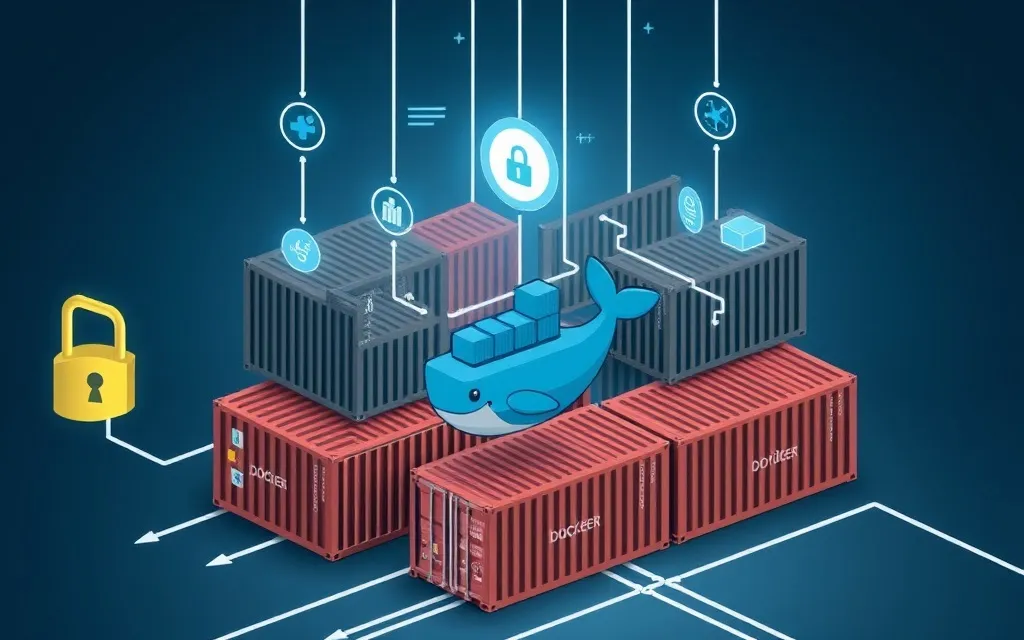
The advent of containerization has transformed software development, offering significant benefits like efficient resource management and seamless deployment. Docker stands out as a leading tool in this domain, celebrated for its usability and extensive community backing. Yet, as Docker's popularity surges, so do the security concerns. In this article, we explore how to shield Docker containers from cryptojacking and malware, sharing vital best practices and insights into the ever-evolving threat landscape.
Navigating Docker Security: The Core Challenges
Docker's charm lies in its ability to package applications and their dependencies into containers, ensuring seamless functionality across environments. Despite its advantages, Docker's architecture can become a target for cybercriminals if misconfigured. A glaring example is Docker's remote API. While it enhances flexibility, when left exposed or improperly set, it becomes a gateway for malicious activities, including the installation of malware or cryptocurrency miners such as SRBMiner and Perfctl, as per Trend Micro findings.
Cryptojacking: The Invisible Threat in Docker Environments
Cryptojacking, or the unauthorized use of computing power to mine cryptocurrencies, is an emerging threat in Docker setups. Cyber actors like the infamous "Commando Cat" exploit unsecured Docker instances, deploying concealed cryptocurrency miners, notably cmd.cat/chattr and the suspected ZiggyStarTux miner. These attackers capitalize on Docker’s remote API vulnerabilities, often bypassing conventional security filters by embedding miners within seemingly trustworthy containers.
An advanced technique leveraged by these culprits involves generating containers that operate as legitimate ones. These malicious containers often run in privileged modes, sharing host PID namespaces, thus amplifying their impact. Attackers frequently engage in a two-phase payload attack—initially destabilizing containers to execute hostile scripts encoded in Base64.
Reinforcing Docker Containers: Essential Security Practices
To combat these threats, infrastructure managers and developers must adopt robust security measures in Docker environments:
Secure Access and Authentication: Establish comprehensive authentication protocols for Docker's remote APIs, restricting access to trusted IP addresses. This step is crucial in blocking unauthorized attempts.
Service Management: Review and disable uncritical Docker services, including remote APIs. Conduct regular audits to ensure no unintentional exposures exist.
Continuous Monitoring and Updating: Maintain a regular schedule for monitoring Docker containers for unusual behavior. Ensure the Docker platform and its components are consistently updated with the latest security patches.
Implement Docker Content Trust (DCT): Leverage Docker Content Trust to verify the authenticity and integrity of container images. DCT utilizes Notary and The Update Framework to ensure secure image deployment, integrating seamlessly with CI/CD pipelines.
Adopt Comprehensive Security Best Practices: Employ the principle of least privilege, continuously scan container images for new vulnerabilities, and use runtime protection tools to maintain secure Docker environments.
Enhancing Container Resilience: Stay Prepared and Vigilant
Navigating the sophisticated world of containerized infrastructure demands constant vigilance against cyber threats. By focusing on vulnerability management and adopting advanced tools designed for container security, organizations can significantly mitigate risks such as cryptojacking and malware invasions. As cyber threats evolve, so too must our defensive playbook for securing Docker environments, staying ever ahead of adversaries.
Encourage progress by evaluating your practices—are you up-to-date with the latest Docker security measures? Share your thoughts or gain further insights by exchanging ideas with fellow professionals or devouring more on this topic through trusted security forums and blogs. Your proactive engagement drives the collective effort in fortifying our digital frontiers.

